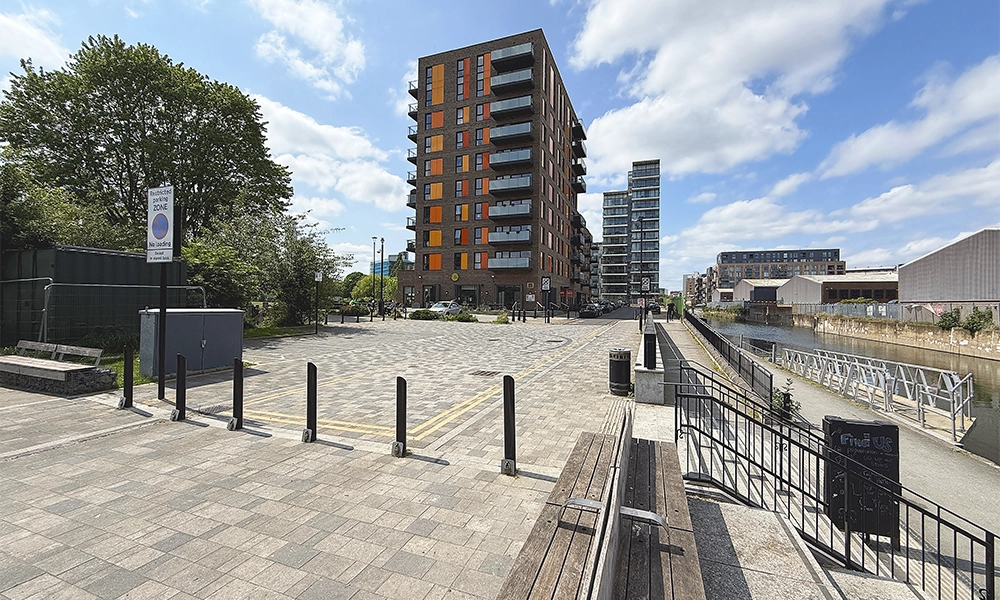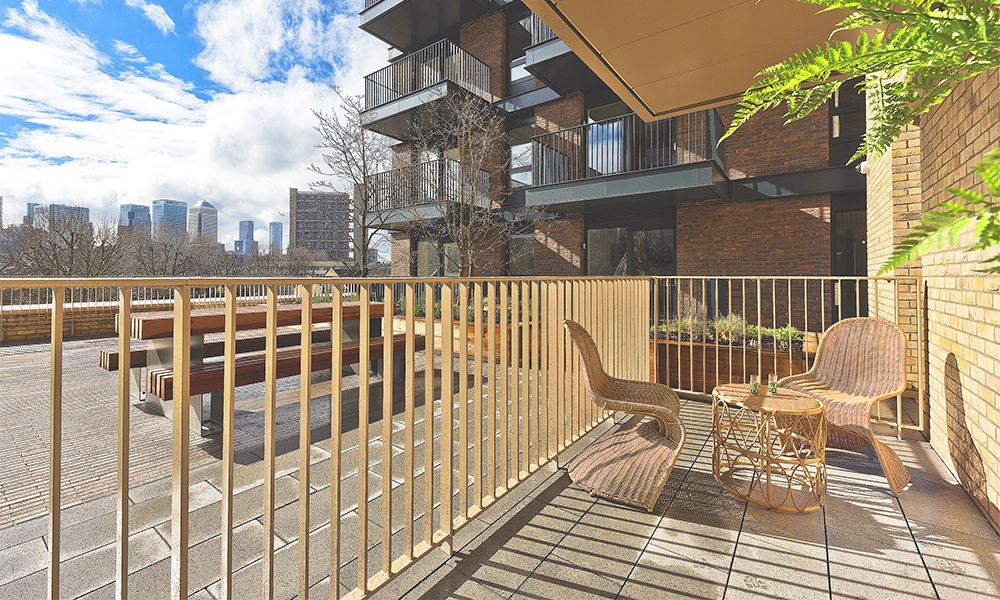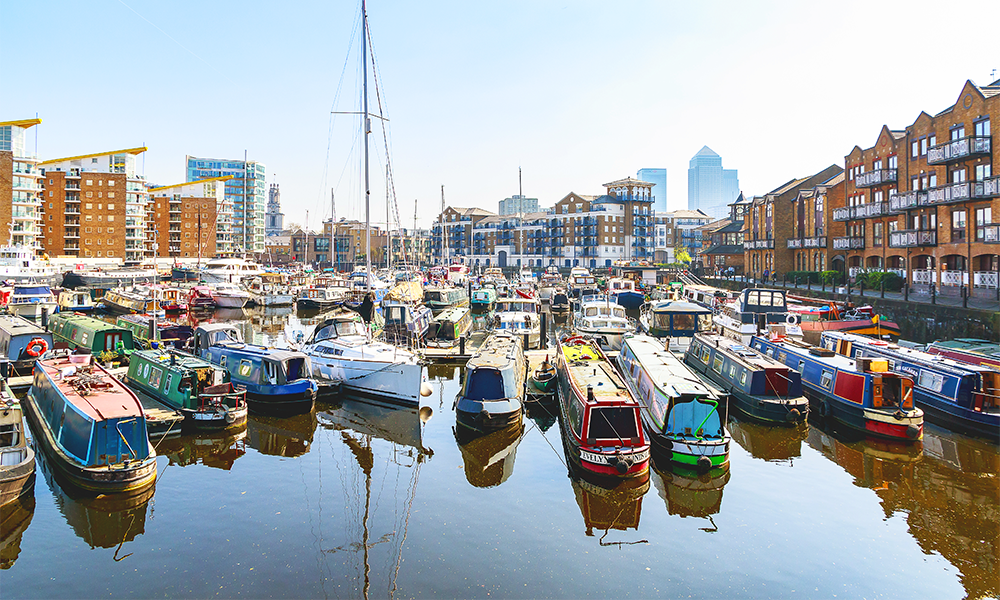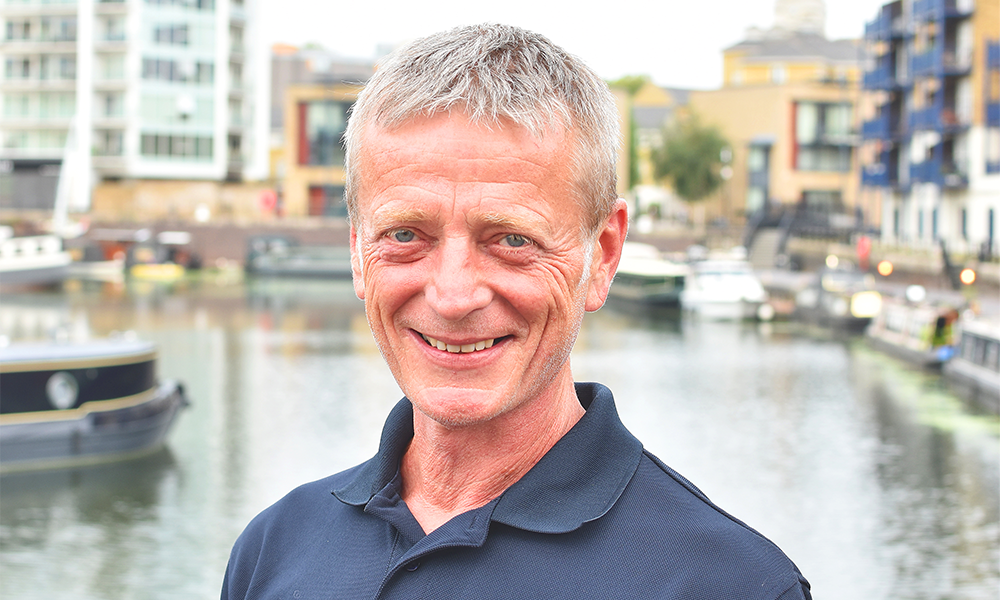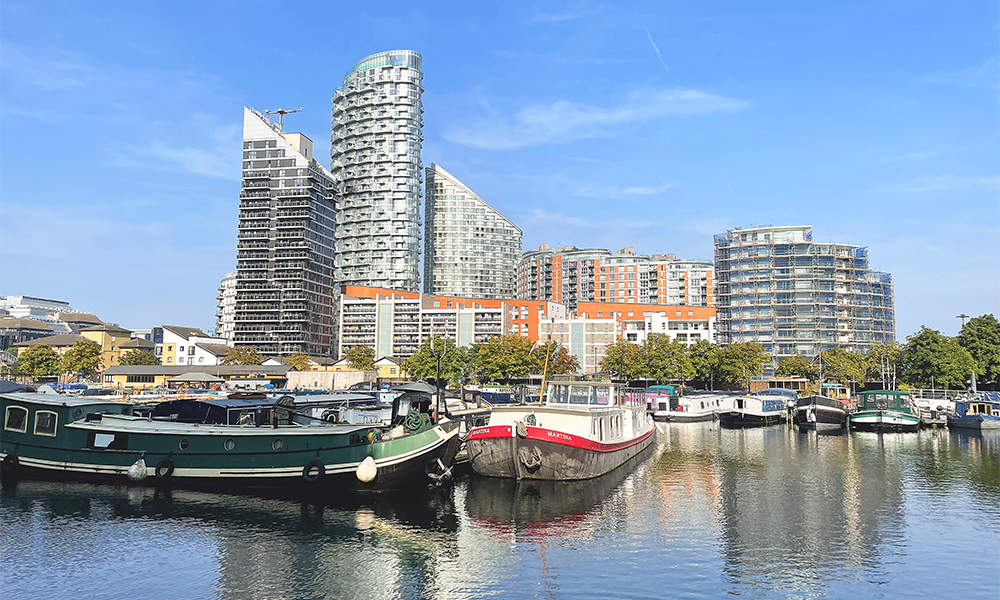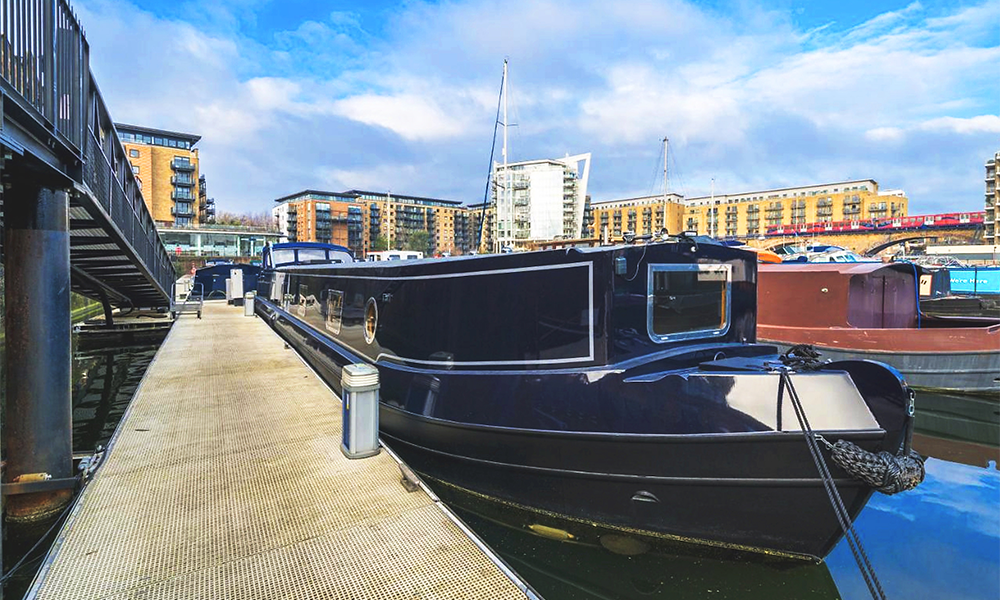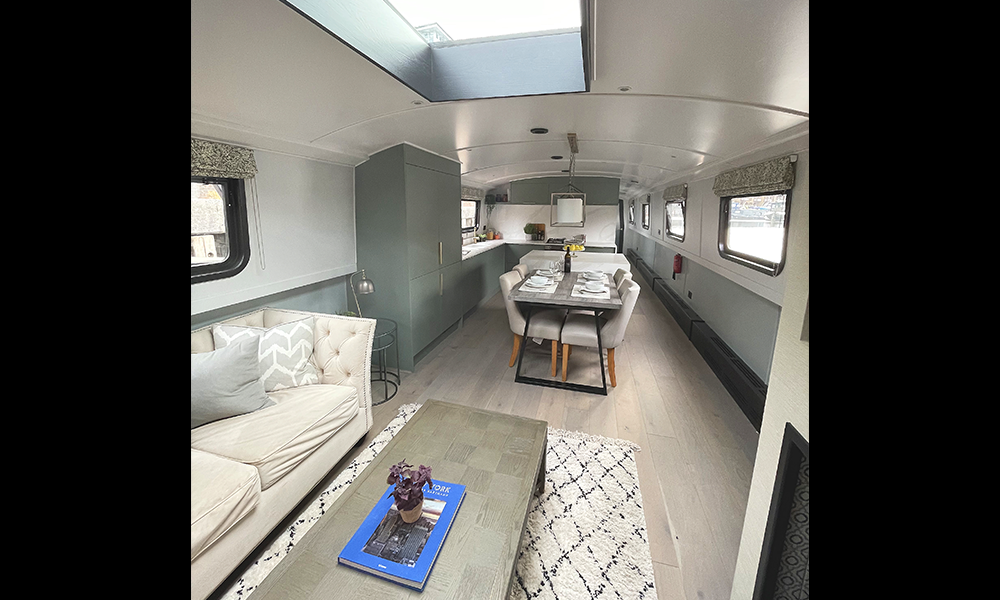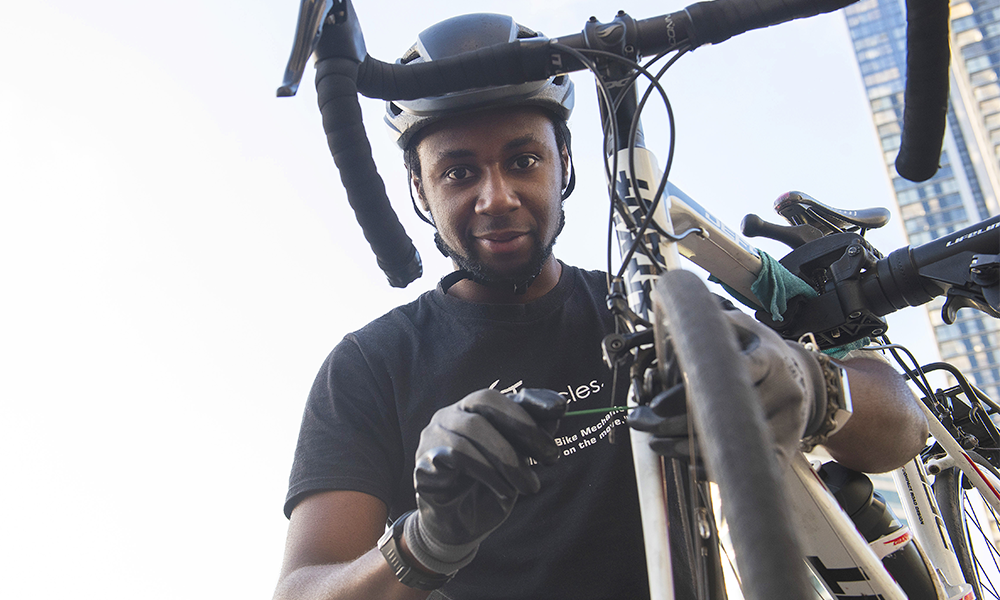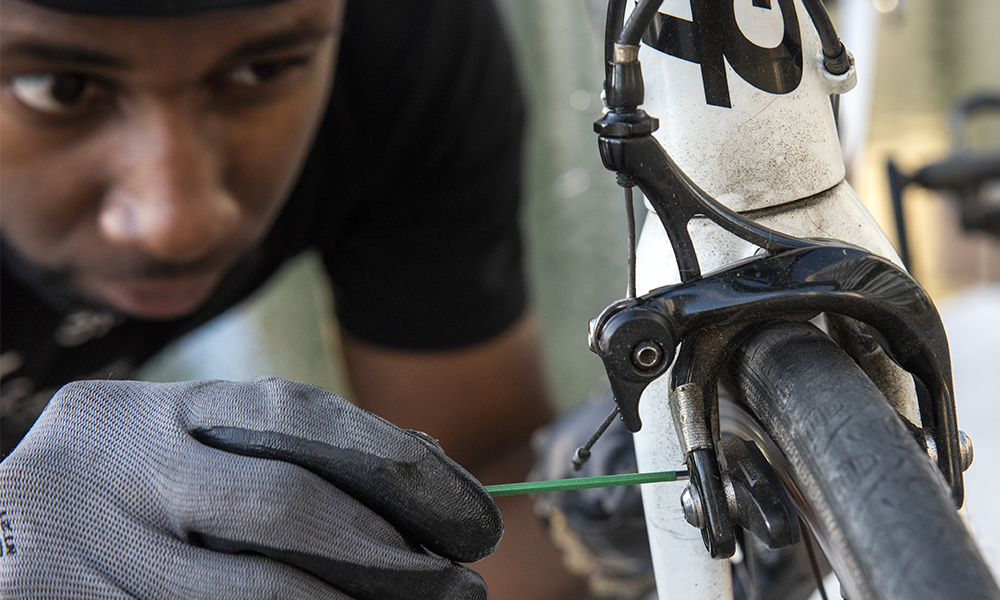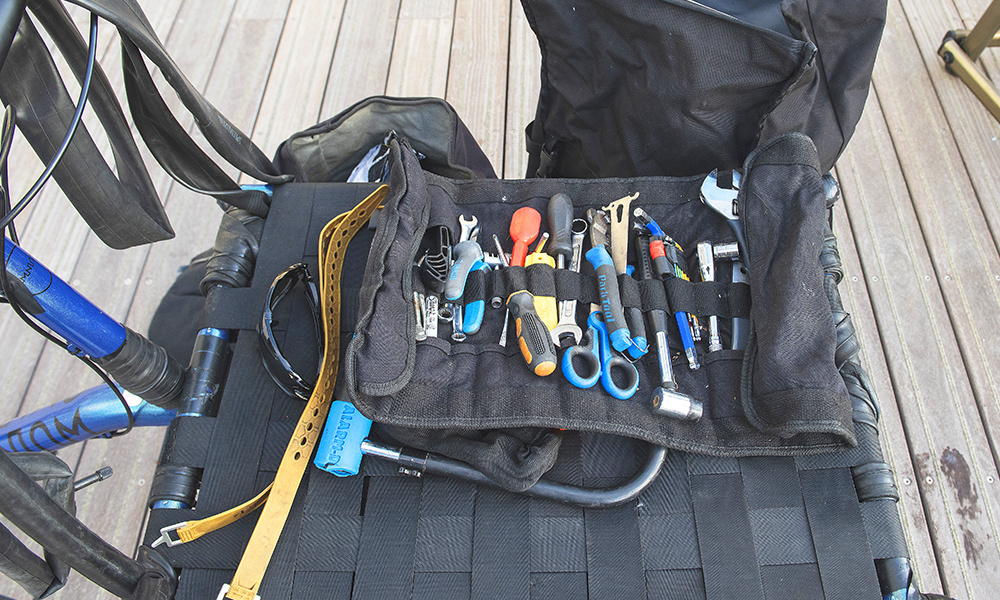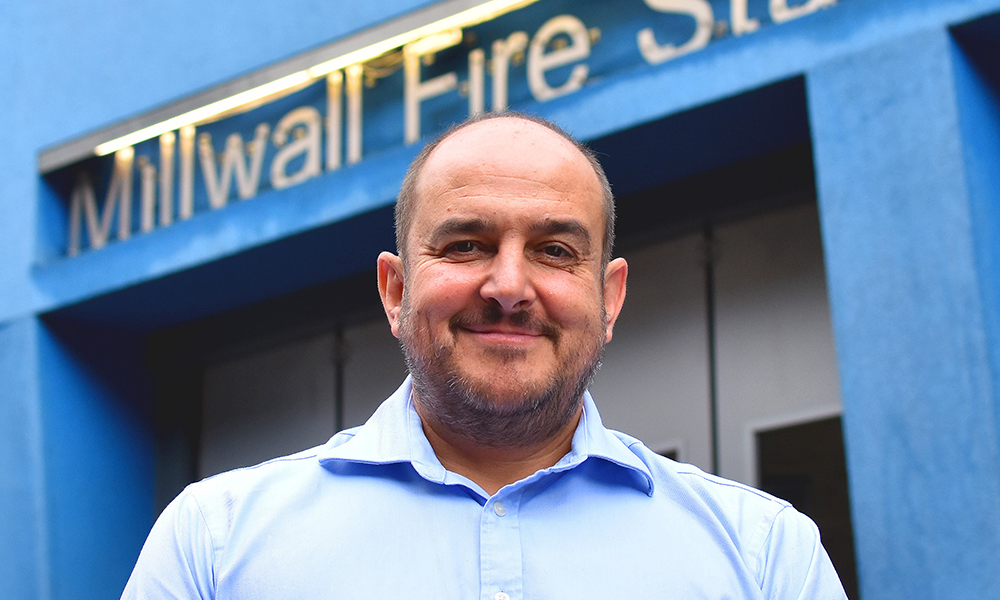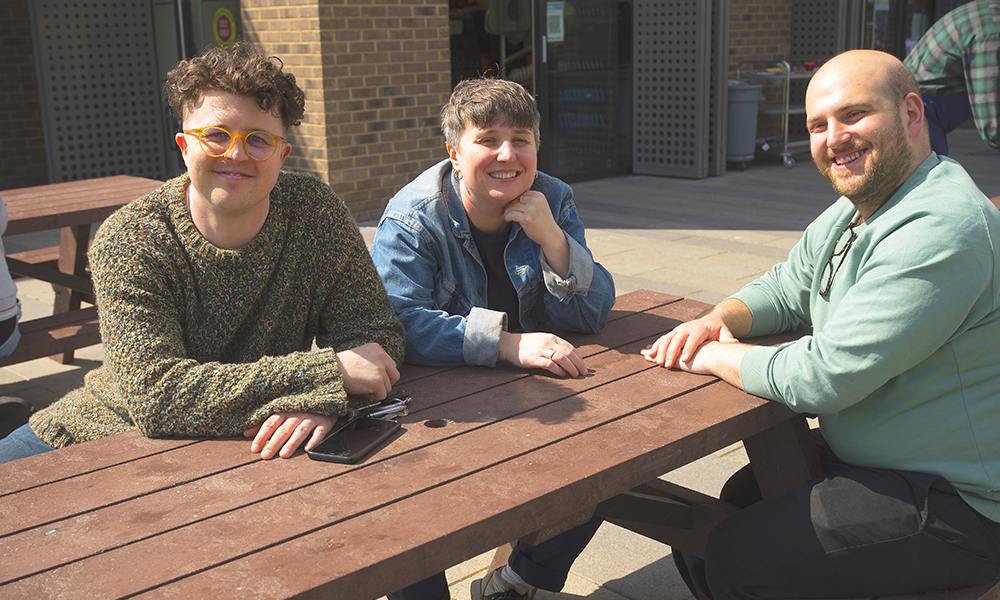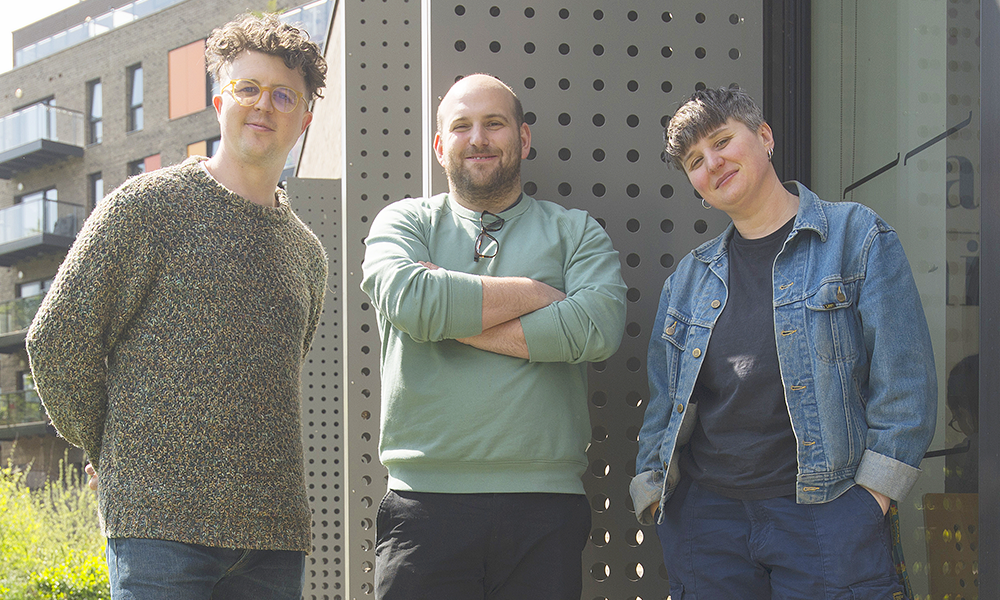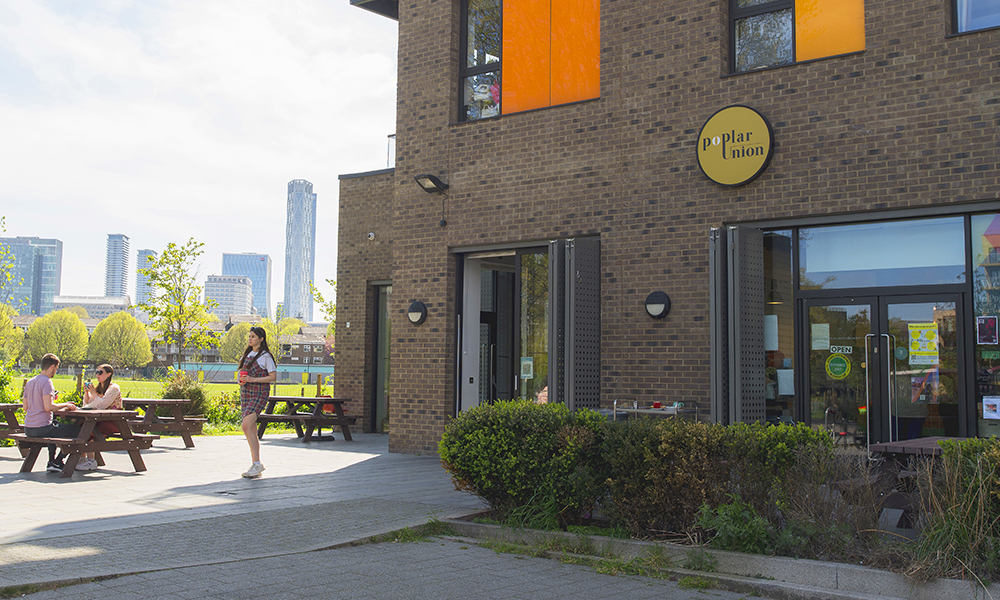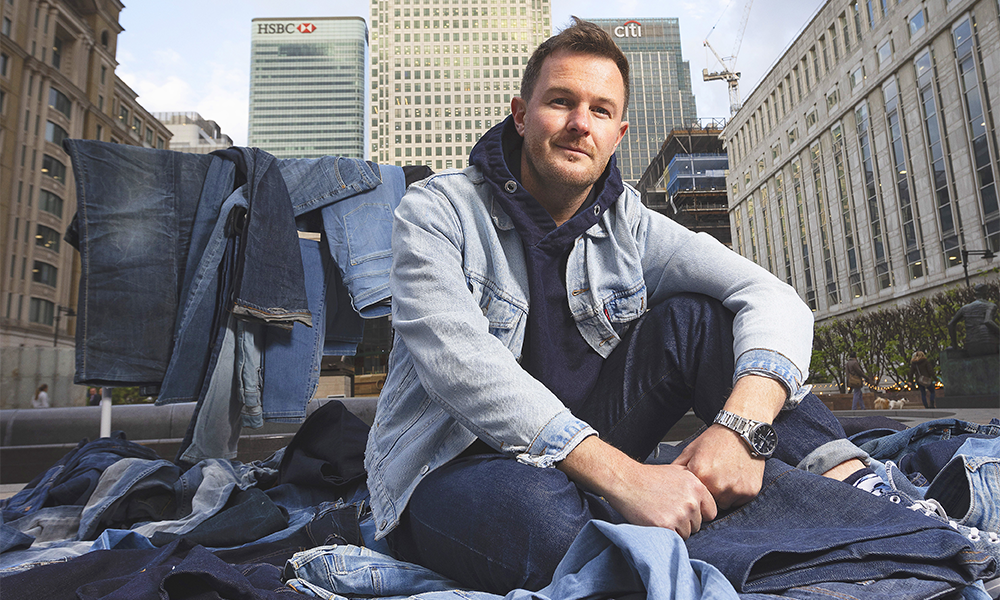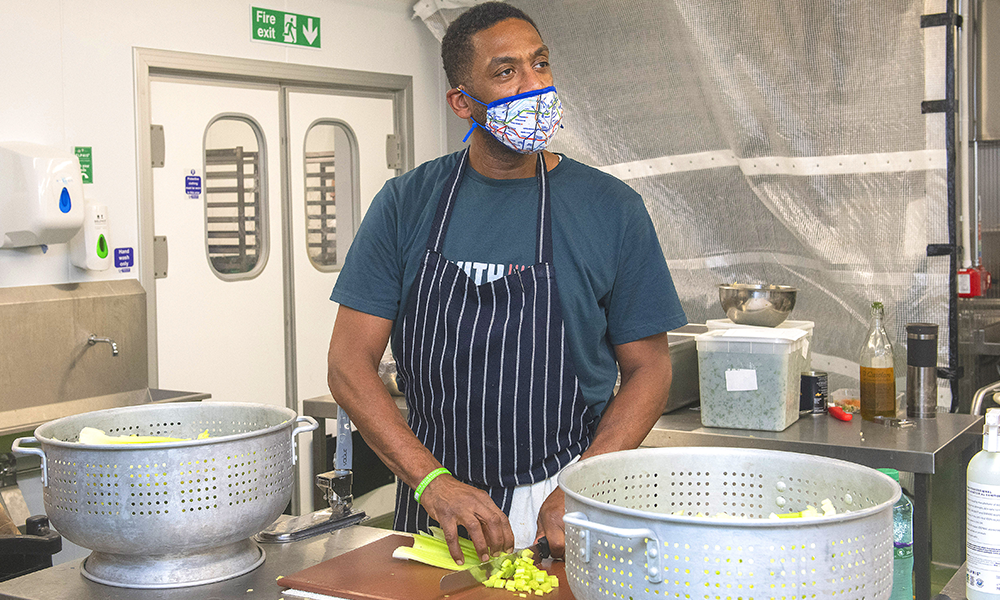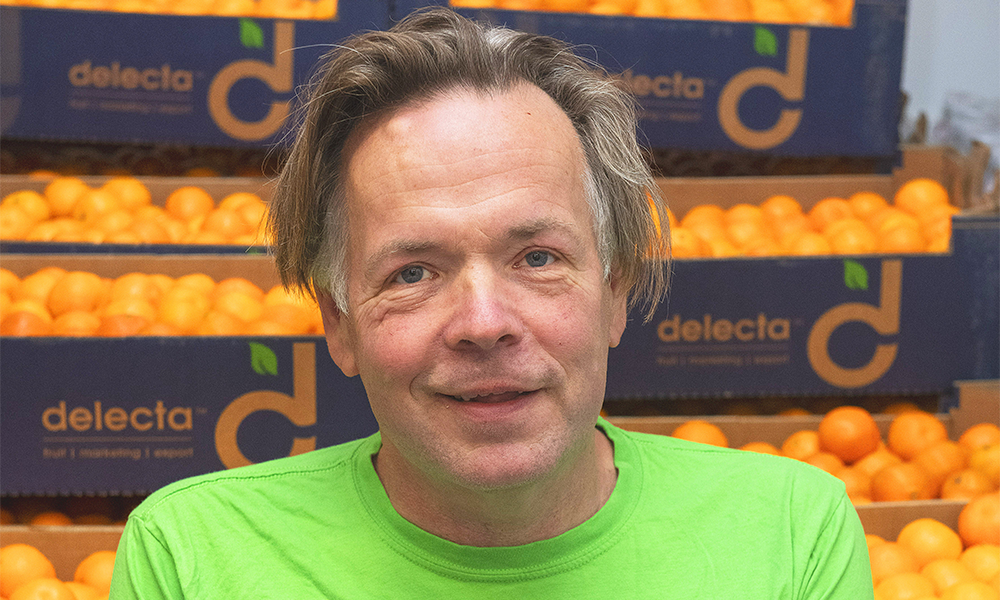The last building in Berkeley Capital’s development on the west bank of the River Lea also includes residents facilities plus Canary Wharf views

Subscribe to our free Wharf Whispers newsletter here
“What will be here in the future is going to be fantastic,” said Luke Tredwell, sales and marketing director at Berkeley Capital.
“We are in an area where everything is coming together to create huge transformation, with thousands of homes and thousands of jobs.”
The part of east London he’s talking about is the corridor leading up the River Lea to Stratford where big plans are afoot.
While the city historically turned its back on the waterway as industrial transportation became the dominant activity along its length, developers are now seeing the capital’s second largest river as a prime asset.
When completed, the various schemes will see many new residents living on its banks, joining up the likes of East India, Canning Town, Bromley-By-Bow and West Ham.
What’s coming is important. Canny buyers will know that considering the future of a place when deciding where to invest is vital.
Understanding a development’s wider context is just as important as assessing the amenities it provides and those in the immediate area.
This brings us to Heron Wharf by Berkeley.
Formerly known as Poplar Riverside, the scheme has been given a fresh identity to help bring clarity to what it offers, rather than simply naming where it is.
The development is in a strong position – the first two buildings in its initial phase have been well received and it recently launched The Millhouse, offering 92 one and two-bedroom apartments for private sale.

creating community at Heron Wharf
“This is the last opportunity to buy a home in the first phase of Heron Wharf,” said Luke.
“The first two buildings are just completing and this is an exciting time as people start living here and forming a community.
“The Millhouse will be a really great addition because it includes a 20m swimming pool, spa, gym and a special salt room on its lower levels that are due to open next year.”
The sales launch of this latest block coincides with the unveiling of some 1.5 acres of Heron Wharf’s park.
This first phase includes expansive green space with views over the Lea and plans to retain part of an historic gasholder as a link to the site’s industrial past.
When complete, the finished 2,900-home scheme will see the park extend to 2.5 acres.
With swathes of planting and landscaping, the scheme has already had a big impact on local wildlife with a plan to increase biodiversity by 545%.
“That’s reflected in the name of Heron Wharf,” said Luke.
“It’s aspirational and, because this scheme is of a substantial size, it’s easier to have a greater impact on the environment.”

services and amenities
The development will also provide a concierge service, a co-working space, a cinema room and a games room in addition to the exercise and wellbeing facilities at the Riverside Club.
In the 79,000sq ft of retail space on-site, residents can also look forward to using local shops, cafes, bars, restaurants, a supermarket and a crèche
But what can buyers at The Millhouse look forward to in the properties themselves?
“They have fantastic layouts, often with amazing views over the park, the river and towards Canary Wharf,” said Luke.
“Depending on what a buyer wants to get from the building, there will be a home in it for them.”
The apartments feature open-plan design and come with private balconies.
Buyers can expect integrated Bosch appliances in the kitchens, white sanitaryware and black fittings in the bathrooms and carpeted sleeping areas with built-in wardrobes for the main bedrooms.

Heron Wharf – well connected
Luke said: “The Millhouse marks the end of the beginning of a new way of living in east London.
“With serene green views, premium wellness facilities and the River Lea on the doorstep, the neighbourhood offers residents a unique blend of tranquillity and city connectivity.
“Heron Wharf continues to evolve into one of London’s most exciting new addresses and The Millhouse is right at its heart.”
Heron Wharf is located within about 10 minutes’ walk of East India DLR station, with Canning Town station a little further away.
Both offer rapid access to Canary Wharf, the city and other destinations across east London.
Those who prefer to get about on their own could opt to walk to the Wharf in less than 30 minutes of go by bike in around a quarter of an hour.
A series of bridges planned to cross the River Lea should improve pedestrian and cycle links in the area still further, allowing access to local amenities such as ecological regeneration project Cody Dock, which is just over the water.
In the immediate area, Aberfeldy Village, London City Island, Goodluck Hope and Trinity Buoy Wharf all offer amenities and places to eat and drink.
Further afield, residents can also easily access the likes of Stratford, the Wharf, the Isle Of Dogs and Greenwich as well as plentiful open spaces such as Tower Hamlets Cemetery Park and Royal Docks without having to travel very far.
It’s a place well worth checking out.

key details: The Millhouse at Heron Wharf
Homes at Heron Wharf are currently on sale with prices ranging from £455,000 to £930,000. Some are ready to move into now.
One and two-bedroom apartments at The Millhouse are expected to complete in May 2026 with prices starting at £460,000.
All apartments come with a 999-year lease.
Find out more about the development here

Read more: Malaysian restaurant Ong Lai Kopitiam to open its doors at Harbord Square




